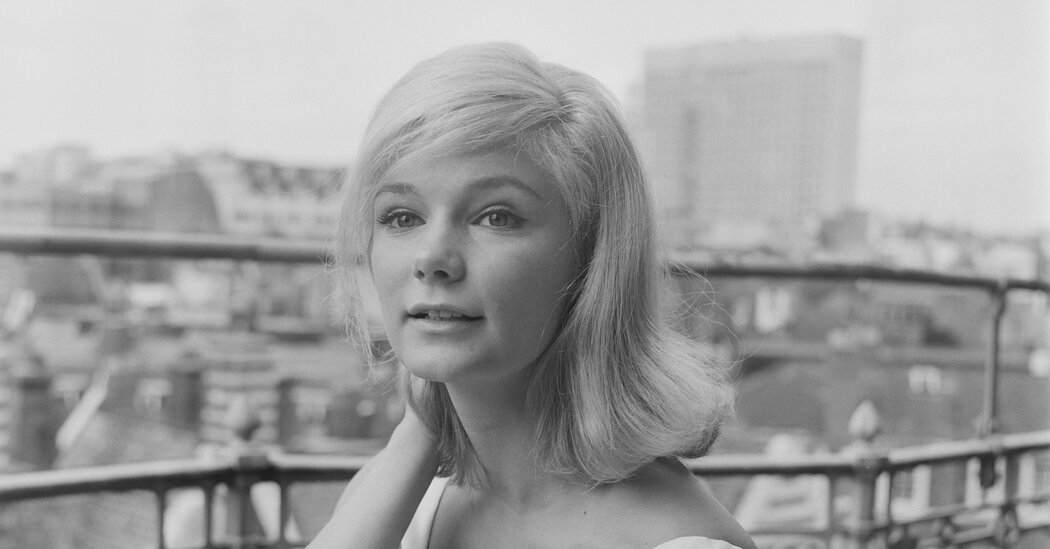Typically playing fragile characters, she had success in the 1960s in “Where the Boys Are” and other movies before her acting career took a downturn.
Yvette Mimieux, who found stardom in the early 1960s portraying delicate, fragile women in “The Time Machine,” “Where the Boys Are” and other films, died on Monday night at her home in Los Angeles. She was 80.
Her death was confirmed by Michelle Bega, a family spokeswoman. She did not specify a cause.
Ms. Mimieux (usually pronounced meem-YUH) was the starlet of the moment in 1960 playing opposite Rod Taylor in “The Time Machine,” based on H.G. Wells’s classic 1895 novel.
Mr. Taylor, as the time-traveling gentleman-scientist from 1890s London, encounters Ms. Mimieux in the year A.D. 800,000 (802,701 in the book) as the character Weena, one of the Eloi, a gentle, blond people so naïve, they don’t realize that their lives are blissful because they are being bred as food for the monstrous predatory Morlocks, who live underground.
“The Time Machine” was not her movie debut. That was the juvenile-delinquent drama “Platinum High School” (1960), released two months earlier. And she had had roles in a couple of television series, “Yancy Derringer” and “One Step Beyond,” the previous year.
But it was the beginning of a flurry of starring roles in high-profile pictures. “I suppose I had a soulful quality,” she told The Washington Post in 1979. “I was often cast as a wounded person, the sensitive role.”
MGM quickly put her under contract. Later in 1960, she appeared in “Where the Boys Are,” the spring break movie about college students partying in Fort Lauderdale, Fla., in the age of the sexual double standard. The movie was mostly a comedy, but Ms. Mimieux’s character makes a serious and socially fatal mistake: She has too much to drink, is molested and is last seen walking, dazed and confused, down a highway median.
She took on a more serious role in “Light in the Piazza” (1962), as Olivia de Havilland’s mentally disabled daughter. Bosley Crowther of The New York Times disliked the film but described Ms. Mimieux’s character as “played with sunshine radiance and rapturous grace.”
The same year, she appeared in “Diamond Head,” as Charlton Heston’s racially enlightened sister; “The Wonderful World of the Brothers Grimm,” as the Dancing Princess; and “The Four Horsemen of the Apocalypse,” as a doomed fighter in the French Resistance.
Ms. Mimieux was a child bride in “Toys in the Attic” (1963), based on the Tony Award-winning Lillian Hellman play. Mr. Crowther declared her performance “showy but without plausibility” in his Times review, which was not much nicer than what he said about her co-stars Geraldine Page and Dean Martin.
In 1964, Ms. Mimieux turned her role as a doomed surfer with epilepsy on the television drama “Dr. Kildare” into a starring movie role with the show’s star: She was Richard Chamberlain’s too-nice-for-sex new bride in “Joy in the Morning” (1965). She also reputedly became the first actress to show her navel on television.
Then her career took a definite downward turn. After a brief foray into series television, solving murder cases as Ralph Bellamy’s bright young criminologist partner in “The Most Deadly Game” (1970), she appeared in a string of television movies — “Hit Lady” (1974), from her own script; “The Legend of Valentino” (1975); “Snowbeast” (1977); “Devil Dog: The Hound of Hell” (1978) — and in films like “Skyjacked” (1972), “Jackson County Jail” (1976) and “The Black Hole” (1979).
Ms. Mimieux was not immune from sniping. It was said that the people casting “The Time Machine” were impressed not only by her beauty but also by her talent for “delivering a good blank expression,” as The Irish Times observed in a profile of her in 2002. In 1979, The Globe and Mail, the Toronto newspaper, found her more complicated: “She occupies some vague region far west of Bardot,” a reporter wrote, referring to France’s most famous sex symbol, Brigitte Bardot, “and just east of Tuesday Weld.”
But overall the critics were not unkind. Pauline Kael once called her “a much better actress than the parts she gets.” Roger Ebert, the Chicago Sun-Times critic, agreed. “Miss Mimieux is better than I imagined she could be,” he wrote when reviewing “Three in the Attic,” a dark 1968 sex comedy. “She gets stuck in a lot of hopeless roles.”
The 1980s found her guest-starring on “The Love Boat” (1984) and playing a department store executive’s glamorous merchandising-manager mistress in the short-lived series “Berrenger’s” (1985). Then, in her 40s, she gave it all up. Years later she came out of retirement, however, to play an Ivana Trump-like character in a television movie based on Jackie Collins’s novel “Lady Boss” (1992).
Yvette Carmen Mimieux was born on Jan. 8, 1942, in Los Angeles, though some sources say 1939. Her father, René Mimieux, who often worked as a movie extra and electrician, was French; her mother, Maria (Montemayor) Mimieux, was Mexican.
Ms. Mimieux was discovered as a teenager by a Hollywood publicist, Jim Byron. He told the story in a syndicated Associated Press article, claiming that he was in a helicopter when he spotted her horseback riding with a friend. The way he remembered it, he landed and gave her his card.
Ms. Mimieux married Evan Harland Engber, an Army soldier, in December 1959 but kept the marriage secret until 1961, when her first two films had been released. After their marriage ended, her second husband was the film director Stanley Donen, from 1972 until their divorce in 1985.
In 1986 she married Howard F. Ruby, who had made his fortune in corporate housing as the founder and chairman of Oakwood Worldwide. He survives her, as do her sister, Gloria Montemayor; her brother, Edouard Mimieux; and five stepchildren.
When not acting, Ms. Mimieux took archaeology classes, founded a business based on Haitian folk art, traveled as far afield as Easter Island, dabbled in real estate (in 2021, she put the Rubys’ own estate on the market for $45 million) and painted large, colorful canvases.
Alyssa Lukpat contributed reporting.




























